Most Fragrant Conifers, Evergreens, etc.
Full_Bloom
16 years ago
Featured Answer
Comments (55)
Full_Bloom
16 years agolast modified: 9 years agoFledgeling_
16 years agolast modified: 9 years agoRelated Discussions
have; fragrant - var. ginger, snail vine , passion vine to trade
Comments (2)i have several things on your wish list. i would love to have starts of your snail vine and ginger....See MoreSuggestions needed: Conifers for Planters, Eastern Exposure, etc.
Comments (19)i was trying to go w/ some continuity b/c i am always experimenting w/ things and my yard gets kind of hodge-podge. What's wrong with hodge-podge?!? Unfortunately, that probably describes my landscaping "style" too. I definitely have a tendency to buy a plant because I like it (if I can afford it) without really considering how it will - or won't - fit in with the rest of the plantings. As far as your planters being dwarfed by your house, why not buy bigger planters (you have plenty of spare cash, right? :-D ) so that you can get larger trees, the trees will be happier, and the whole design concept will blend in better with the size of your house? Holly...See MoreWhich Conifer Would Be Rated the Most Adaptable?
Comments (21)"ERC is adaptable over all of the eastern US" I still say taxodium by a wide margin. Maybe j. virginiana is more cold hardy and therfore more 'adaptable' up north, but taxodium stretches down into the tropics. Plus you don't see ERC growing in standing water. As you go south into florida ERC is replaced by closely related southern red cedar, juniperus silicola so maybe it doesn't do well in very wet conditions and it's probably not fair to say ERC is adaptable all over the east coast, just because I doubt it would persist in extreme southern florida. I hadn't originally considered platycladus but maybe taxodium beats it out because of that same point. The thing grows in swamps AND dry spots. A relative has a few planted in Midland, Texas which is a frickin desert and where you won't get away with ERC. There are some very large specimens in New Mexico, and huge trees in european collections. And it's commonly cultivated in horticultural trade in the American northwest. So I might argue Taxodium is adaptable in most of the contiguous 48. Where would it not survive is probably the easier question. "What in the world is a platycladus? Sounds like a furry creature from "down under"." The platycladus is a common item, can probably find it at your local lowes or home depot. They are still often labeled as Thuja orientalis....See MoreConifers/Evergreens with Red, Purple, Orange Foliage
Comments (9)Wow. Some great stuff here. Visiting an arboretum in winter is a great idea. The National Arboretum is a few miles away. That will be a great starting point. I've seen pix of Cryptomeria japonica 'Elegans' on eBay. But the ones posted here look much more real. That could be a very nice addition here. But it looks like it gets pretty big and grows pretty fast. I found that Iseli has a Cryptomeria Japonica 'Elegans Nana' that is dwarf and globe shaped. That might be a good smaller variety. And I have a local nursery in Boyds, MD, Susanna Farms, that buys a lot from them. So I will ask them about getting some in spring. Iseli has a bunch of other varieties of Cryptomeria Japonica that are smaller. Great suggestion. Platycladus orientalis Morgan looks like a great one, too - though bronze rather than purple. The pix I saw look also like they're fairly small. Chamaecyparis thyoides 'Red Star' seems to have mixed blessings. Found a thread on it from 2007 where people didn't care for it because it tends to splay... Juniperus communis 'Kalebab' looks nice. My only concern is that sometime my wife may decide it is dying (no matter what I say) and cut it down while I'm at work. Juniperus horizontalis 'Mother lode' looks good. Gold and blue-grey during the summer, and gold/bronze/purple in the winter. Calluna vulgaris 'Wickwar Flame' and 'Firefly'? I never thought of heather as an evergreen. But if it is, I guess I'll have to start giving more of them a second look. Finally, the Chamaecyparis thyoides 'Heather Bun' look like they're worth a look. Thanks all for the suggestions. Up until now, I've been kind of limited to trying to find Picea Abies 'Rubra Spicata'....See Morepineresin
16 years agolast modified: 9 years agoFull_Bloom
16 years agolast modified: 9 years agogreenlarry
16 years agolast modified: 9 years agopineresin
16 years agolast modified: 9 years agogreenlarry
16 years agolast modified: 9 years agonemoooo
16 years agolast modified: 9 years agotoyo2960
16 years agolast modified: 9 years agoken_adrian Adrian MI cold Z5
16 years agolast modified: 9 years agoFull_Bloom
16 years agolast modified: 9 years agoFull_Bloom
16 years agolast modified: 9 years agogreenlarry
16 years agolast modified: 9 years agonemoooo
16 years agolast modified: 9 years agopineresin
16 years agolast modified: 9 years agoFull_Bloom
16 years agolast modified: 9 years agonemoooo
16 years agolast modified: 9 years agogreenlarry
16 years agolast modified: 9 years agowadet
16 years agolast modified: 9 years agonemoooo
16 years agolast modified: 9 years agoLuv My Conifers
16 years agolast modified: 9 years agopineresin
16 years agolast modified: 9 years agogreenlarry
16 years agolast modified: 9 years agowisconsitom
16 years agolast modified: 9 years agoLuv My Conifers
16 years agolast modified: 9 years agogreenlarry
16 years agolast modified: 9 years agoFull_Bloom
16 years agolast modified: 9 years agoLuv My Conifers
16 years agolast modified: 9 years agogreenlarry
16 years agolast modified: 9 years agopinetree30
16 years agolast modified: 9 years agoLuv My Conifers
16 years agolast modified: 9 years agoFull_Bloom
16 years agolast modified: 9 years agopineresin
16 years agolast modified: 9 years agoFull_Bloom
16 years agolast modified: 9 years agogreenlarry
16 years agolast modified: 9 years agoFledgeling_
16 years agolast modified: 9 years agogreenlarry
16 years agolast modified: 9 years agoFledgeling_
16 years agolast modified: 9 years agotcharles26
16 years agolast modified: 9 years agopineresin
16 years agolast modified: 9 years agoFull_Bloom
16 years agolast modified: 9 years agogreenlarry
16 years agolast modified: 9 years agotcharles26
16 years agolast modified: 9 years agoLuv My Conifers
16 years agolast modified: 9 years agogreenlarry
16 years agolast modified: 9 years agonick363
16 years agolast modified: 9 years agonewfriend
13 years agolast modified: 9 years agoColumbcille Dougherty
6 years agotsugajunkie z5 SE WI ♱
6 years agoColumbcille Dougherty
6 years ago
Related Stories
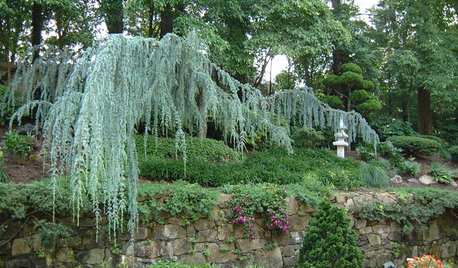
PLANTING IDEASDesigning With Conifers: Exploring Color
Colorful, structural and adaptable, conifers are waiting to transform your garden
Full Story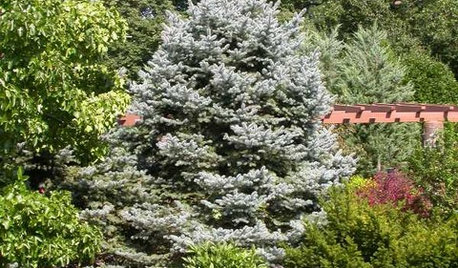
LANDSCAPE DESIGN10 Evergreens for Beautiful Foliage All Year
Give your landscape consistent color and structure with the emeralds, chartreuses and blues of evergreen trees and shrubs
Full Story
PLANTING IDEASStretch the Budget, Seasons and Style: Add Conifers to Your Containers
Small, low-maintenance conifers are a boon for mixed containers — and you can transplant them to your garden when they’ve outgrown the pot
Full Story
GARDENING GUIDESDesigning With Conifers: Find the Perfect Fit for Your Landscape
Conifers range from fairy-garden size to 70 feet tall. Here’s how to decifer the plant tag for the perfect long-term fit in your garden
Full Story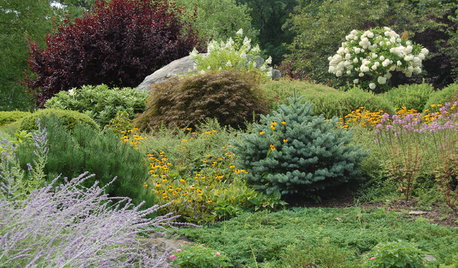
GARDENING GUIDESDesigning With Conifers: Finding the Right Garden Bedmates
In gardening, building on commonalities creates an enduring relationship
Full Story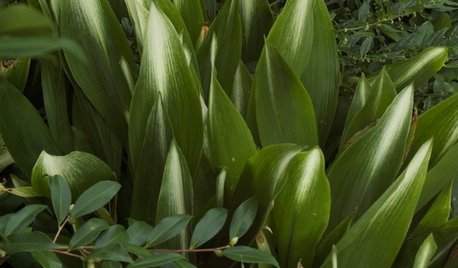
LANDSCAPE DESIGN7 Evergreen Wonders of the Plant World
Year-round interest, structure and beautiful color? These top-notch evergreens have gardens covered
Full Story
GARDENING GUIDESHave Acidic Soil in Your Yard? Learn to Love Gardening Anyway
Look to acid-loving plants, like conifers and rhododendrons, to help your low-pH garden thrive
Full Story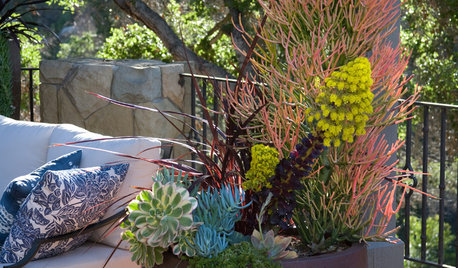
FALL GARDENING12 Fabulous Fall Container Gardens
Celebrate the season with potted displays rich in color and texture
Full Story
LANDSCAPE DESIGNThe 7 Best Plant Types for Creating Privacy and How to Use Them
Follow these tips for using different kinds of plants as living privacy screens
Full Story
GARDENING FOR BUTTERFLIESBe a Butterfly Savior — Garden for the Monarchs
Keep hope, beauty and kindness alive in the landscape by providing a refuge for these threatened enchanters
Full Story


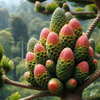

greenlarry